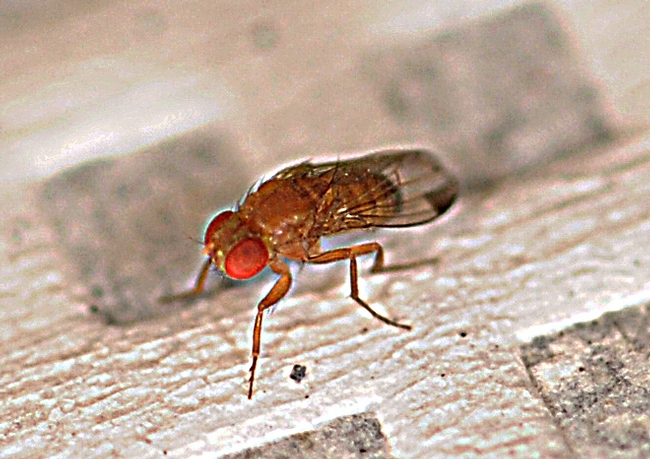- Author: Kathy Keatley Garvey

Undergraduate student Jessica West, Ph.D. candidate Rosanna Kwok, and research specialist Katherine “Katie” Murphy all excel in STEM, an acronym that stands for the academic disciplines of “science, technology, engineering and mathematics.”
“Undergraduates who learn cutting-edge research skills in laboratories like Dr. Chiu's set themselves apart from students who only pursue coursework for their degree,” said Steve Nadler, professor and chair of the UC Davis Department of Entomology and Nematology. “Undergraduate research opportunities are what turn science students into young scientists.”
Early in their undergraduate studies, West and Murphy were accepted into the UC Davis Research Scholars Program in Insect Biology, a vigorous, multi-discipline, research and mentoring program administered by UC Davis Department of Entomology and Nematology faculty members Jay Rosenheim, Louie Yang and Chiu.
"Including this year, over the first six years that the program has operated, we have admitted 58 students, 36 of which (62%) are women," said Research Scholars Program co-administrator and professor Jay Rosenheim.
"It is asking a lot of freshmen and sophomores to jump into an intensive research experience when they are already challenged by their academic course load," Rosenheim said. "But we've been very gratified with the accomplishments of the students and their demonstrated abilities to develop the skills needed to conduct independent research. Strong effort by the students and close mentorship by campus faculty seem to be key ingredients in student success.”
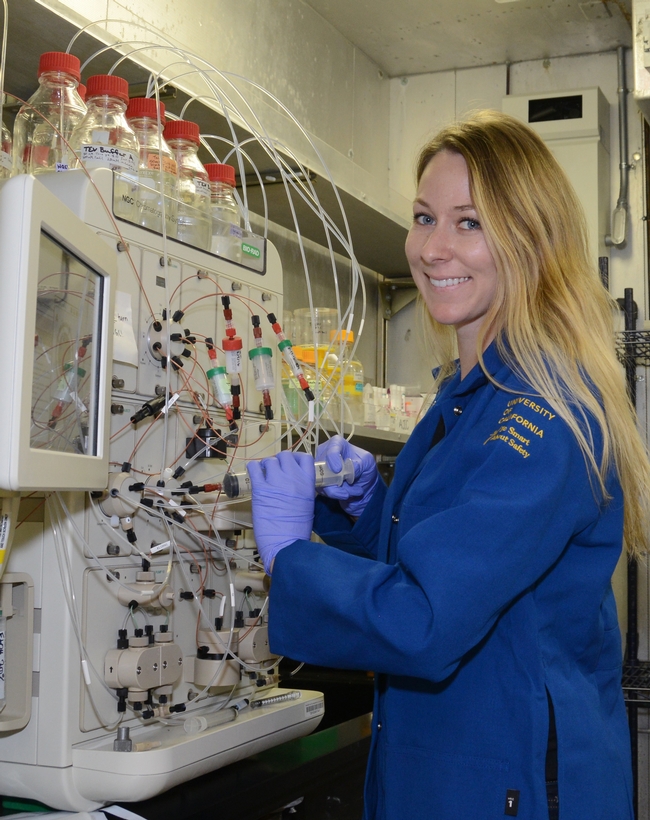
West, who will receive her bachelor's degree in bochemistry and molecular biology June 12, is the recipient of the 2016 College of Biological Sciences Medal—only one is awarded each year. She also won an “Outstanding Citation for Research Performance.” Although not yet in graduate school, West has already published two peer-reviewed articles. In November 2015, she received the President's runner-up prize at the Entomological Society of America (ESA) meeting in Minneapolis for her talk on the seasonal biology of the spotted wing drosophila, Drosophila suzukii. This fall she will enroll in the Ph.D. program in biochemistry at Cornell University, Ithaca, N.Y. “Over her undergraduate graduate career, Jessica has compiled an impressive list of awards and prizes,” said Chiu, an assistant professor in the UC Davis Department of Entomology and Nematology.
Kwok, scheduled to graduate from UC Davis in the fall of 2016 with a Ph.D. degree in entomology, has already published six peer-reviewed papers, including one in PLOS Genetics, and has three more in preparation. As part of her requirement for her 2014-16 NIH fellowship, she will leave the Chiu lab in June 2016 to start an internship at OncoMed Pharmaceuticals, Inc. in Redwood City, CA. The internship is her last requirement before graduation from the Entomology Graduate Group.
Like West, Kwok received a President's runner-up prize (2013 ESA meeting) for her presentation on the chronotoxicity of spotted wing drosophila, working with Chiu and Professor Frank Zalom, integrated pest management specialist in the department. “I believe Rosanna will have a very successful career in the biotech industry,” Chiu said.
Murphy, who was accepted into the inaugural class for the Research Scholars Program in Insect Biology, began working in the Chiu lab her sophomore year. When she graduated from UC Davis in 2014 with a bachelor of science degree in neurobiology, physiology, and behavior, she received an “Outstanding Citation for Research Performance.” After graduation, she opted to stay in the Chiu lab to gain more research experience. “Over her career in my lab--from undergraduate research to two years of technician-- Katie has already published four peer-reviewed papers, has one currently in review, and two in preparation,” Chiu said. She is also an author on a provisional patent application for a biopesticide that the Chiu lab developed to target insect pests.
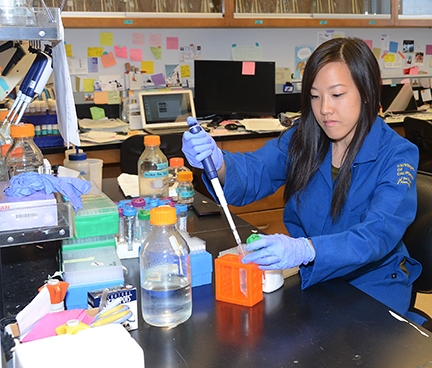
The three young women followed a similar path to get where they are today and strongly encourage others to pursue STEM careers.
Jessica West
Jessica West, who grew up in the Redding area of Northern California, spent her childhood in the small town of Shasta Lake before enrolling at UC Davis.
“I first became interested in science in high school, particularly when I took Advance Placement (AP) Biology,” West recalled. “ I was very curious and always asked a lot of questions in school. What excites me the most is that now I can ask questions that don't yet have answers, and through my research I can work to actually answer them.”
West, who will start her PhD program in biochemistry, molecular and cell biology at Cornell in the fall, says her career goal “ is to teach and conduct research at the university level.”
“I think it's important to start getting girls involved in science at a young age,” West said. “Often young girls are not encouraged to pursue their interests in STEM subjects, but I think that the culture is changing. There are programs like Girls Who Code that seek to get more girls involved in STEM fields that are traditionally male-dominated. If young girls can see that other women like them can succeed in STEM fields, they are more likely to see their goals as attainable.”
Rosanna Kwok
Rosanna Kwok grew up in Las Vegas, Nev. –“Yes, people actually live there,” she quipped. “I have always been interested in having a career in science,” she recalled, “and it just took a bit of exploration before I found myself studying the circadian clock under the mentorship of Joanna. The most exciting and motivating thing about being a scientist is knowing that I have the resources to answer the ‘how' and ‘why' questions regarding biological phenomenon.
Her career plan is “to contribute my background and skills to the field of precision therapeutics. It is hard to predict where I will be in a few years, but my goal is to be in an environment where I am constantly challenged and growing as a scientist.”
How to get more young women and girls interested in science? “Thankfully, I do believe that there is a much greater representation of women in sciences than there has in the past,” Kwok said. “With that said, I really believe in the importance of establishing mentoring relationships when it comes to retaining the amount of women in science. I have definitely benefitted from having strong female mentors throughout my scientific career. Many girls are discouraged starting from pursuing their curiosities, or from pursuing certain career paths, and sometimes it takes a more established person in that field to tell them to just go for it, and not apologize for wanting something different than what's expected of them.”
“I believe that in order to get more people in general interested in science, there needs to be more communication between scientists and people who are not in STEM fields,” Kwok said. “Not only will this show that large scientific achievements can be made by real people, it will also help prevent the misconceptions and distrust in science that we sometimes see."
Katherine “Katie” Murphy
Katie Murphy spent her childhood in a small rural town in Lake County, Northern California. “ I grew up on a pear farm, which exposed me to the staggering amount of fruit that goes to waste if the appearance of the fruit is not perfect enough for the grocery store,” she related. “I believe we have a duty as a society to be less wasteful, and therefore I feel inspired to find ways to turn waste into useful materials."
“I discovered my interest in science as a career through a student research position in Dr. Joanna Chiu's lab at UC Davis,” Murphy said. “I believe the greatest challenges that face the world today, such as world hunger, global warming, and the energy crisis, can only be met through technological advancement. I am excited for the opportunity to develop new technologies that use cutting edge science to make the world a better place.”
As an undergraduate research assistant, she was awarded a UC President's Undergraduate Research Fellowship for the summer/fall of 2012 for her project, “Transgenic Yeast as an Organic Pesticide.” She explored the use of RNAi technology in combating the invasive pest, the spotted-wing drosphila, Drosophila suzukii.
Murphy's career plans? “I am pursuing a career in metabolic engineering,” she said. “The technology I hope to develop uses microbes to produce fuels and chemicals from ‘leftovers' such as agricultural waste and non-edible plant materials. This technology will reduce dependency on fossil fuels and provide sustainable energy alternatives."
When asked how society can engage more young women and girls in science, she commented “I think children and adolescents of both genders can benefit from greater exposure to STEM fields. In the media, scientists are often represented as evil, mad, or even downright uncool on TV shows such as The Big Bang Theory. What about a TV show where scientists and engineers are portrayed as heroes?”
The Research Scholars Program in Insect Biology, established in 2011, aims to provide academically strong and highly motivated undergraduates with a multi-year research experience that cultivates skills that will prepare them for a career in biological research. This could result in career goals that will take them to medical school, veterinary school or graduate program sin any biological sub-discipline, the administrators said. Because insects can be used as model systems to explore virtually any area of biology (population biology; behavior and ecology; biodiversity and evolutionary ecology; agroecology; genetics and molecular biology; biochemistry and physiology; cell biology), faculty in the program can provide research opportunities across the full sweep of biology. More information on the program is at http://ucanr.edu/sites/insectscholars/
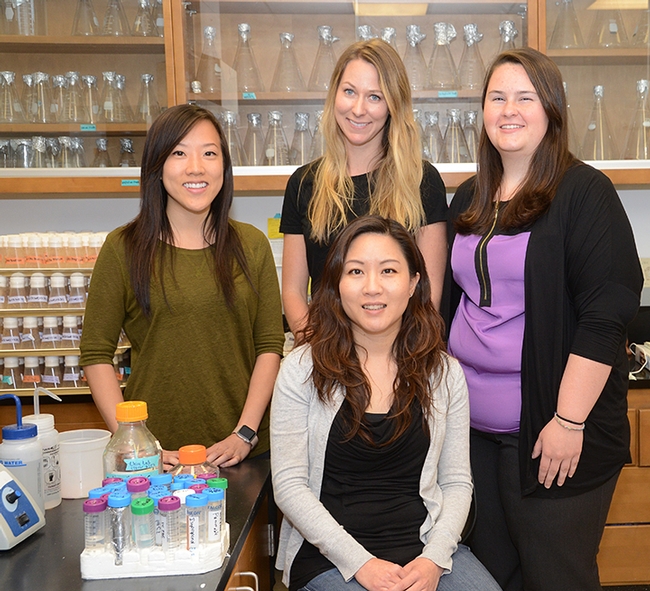
- Author: Kathy Keatley Garvey
Mohammad-Amir Aghaee, graduate student in the Larry Godfrey lab in the UC Davis Department of Entomology and Nematology, won the first-place President's Prize in his category for his 10-minute talk on a rice water weevil at the Entomological Society of America's 61st annual meeting, being held Nov. 10-13 in Austin, Texas.
Graduate student Rosanna Kwok of the Joanna Chiu lab and the Frank Zalom lab received a second place award in the President's Prize competition for her 10-minute talk on the spotted wing drosophila.
Aghaee's topic was "Exploring the Mechanisms of Winter Flooding as a Cultural Control Against Rice Water Weevil, Lissorhoptrus oryzophilus."
His abstract: "Rice water weevils (Lissorhoptrus oryzophilus Kuschel) are the primary insect pest in California rice agriculture. They present a challenge for IPM because of their soil dwelling larvae, which prevents the effective use of parasitoids, nematodes and predators. However a possible cultural control method may present a sustainable solution if its mechanism can be explained. Data from the field experiments in the 1990s showed that winter flooding of rice fields to break down post harvest rice straw would result in reduced larval populations in the spring. Studies from the last two years have been exploring the mechanisms behind this decline. Similar results were shown in a greenhouse study in the summer of 2013, with reduced larval counts in treatments with a winter flood compared to treatments without the flood. As part of this study we also examined the addition of rice straw, which nullified the effects of the winter flood. The evidence suggests that use of winter flooding in California will have benefits for growers against rice water weevil, but the mechanism behind it has yet to be determined."
Kwok, who works closely with integrated pest management specialist/professor Zalom; doctoral candidate Kelly Hamby of the Zalom lab; and molecular geneticist Joanna Chiu, assistant professor in the Department of Entomology and Nematology, discussed "Integrating Circadian Activity and Gene Expression Profiles to Predict Chronotoxicity of Drosophila suzukii Response to Insecticides."
Her abstract:
Native to Southeast Asia, Drosophila suzukii is a recent invader that infests ripe and ripening fruit, leading to significant crop losses. Since current D. suzukii management strategies rely on insecticide usage, and insecticide detoxification gene expression is under circadian regulation in the closely related Drosophila melanogaster, we set out to determine if integrative analysis of daily activity patterns and detoxification gene expression can predict chronotoxicity of D. suzukii to insecticides. Locomotor assays, detoxification gene expression analysis, and acute insecticide contact bioassays were performed under conditions that approximate a typical summer day in Watsonville, California, where D. suzukii was first detected in North America. Summer is also the cropping season, when most insecticide applications occur. We observed that D. suzukii assumed a bimodal activity pattern, with maximum activity occurring at dawn and dusk. Five of the six genes tested exhibited rhythmic expression over a circadian day, with the majority showing peak expression at dawn (ZT0, 6am). We observed significant differences in the chronotoxicity of D. suzukii towards malathion, with highest susceptibility at ZT0 (6am), corresponding to peak expression of cytochrome P450s that may be involved in bioactivation of malathion. High activity levels were not found to consistently correlate with high insecticide susceptibility as initially hypothesized. Chronobiology and chronotoxicity of D. suzukii provide valuable insights for monitoring and control efforts, because insect activity as well as insecticide timing and efficacy are crucial considerations for pest management. However, field research is necessary for extrapolation to agricultural settings.
The first-place President's Prize consists of a one-year free membership in ESA, a $175 cash prize, and a certificate. The second-place winner receives a certificate and a $50 cash prize.
Frank Zalom is the incoming president of the 6500-member ESA and will assume his new duties today (Nov. 13). He will president over the ESA's 62nd annual meeting, to be held next year in Portland, Ore.
Related Link:
UC Davis Pioneering Research on Spotted-Wing Drosophila May Lead to Fewer Insecticide Applications

- Author: Kathy Keatley Garvey
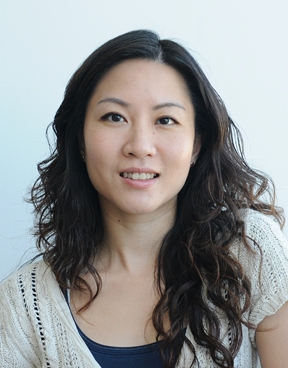
Native to Southeast Asia, Drosophilia suzukii infests soft-skinned fruits such as strawberries, raspberries, cherries, blueberries and blackberries. The insect was first detected in the United States in 2008 when scientists identified it in the central coastal region of California. It can cause an estimated $300 million in damage annually to California crops.
In pioneering research, the four-member team from the Department of Entomology and Nematology sought to find out the pest’s response to insecticide toxicity and whether it could be predicted through the integration of circadian activity and gene expression profiles.
“It is possible that if insecticides can be applied at the time when the SWD's defense system against insecticides is at its weakest state, they will be more effective,” Chiu said. “Results from our experiments turned out to be a bit more complicated than we originally envisioned, but we indeed found that at least for malathion, there is an optimal time for application to inflict maximum damage to SWD. We hope that growers will be able to use fewer insecticides, thereby decreasing damage to the environment and decreasing costs at the same time.”
“We caution growers that we still need to conduct field trials to confirm our laboratory observations,” Chiu addedf.
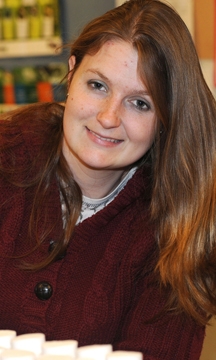
“SWD is becoming a big problem for growers of soft-skinned fruits such as strawberries, raspberries, blueberries, and cherries all over the world,” Chiu pointed out. “With the need to satisfy insect damage standards and to reduce crop loss, the growers generally adopt high levels of insecticide usage for SWD control and risk reduction. In the long-term, this will lead to development of insecticide resistance, not to mention the damage inflicted on beneficial insects.”
“Current Drosophila suzukii management strategies rely heavily on insecticide usage, because other pest management tactics are still being development and optimized,” wrote Chiu and fellow authors Frank Zalom, integrated pest management specialist and professor of entomology; doctoral candidate Kelly Hamby of the Zalom lab; and graduate student Rosanna Kwok of the Chiu lab.
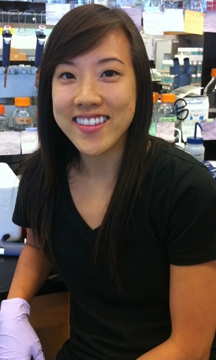
Said Hamby: “The paper is a first look at Drosophilia suzukii daily activity rhythms under a temperature and light/dark cycle mimicking California raspberry growing conditions as well as a look at the daily cycling of insecticide susceptibility enzymes that could potentially detoxify insecticides. The next steps would be to include more temperature conditions, more insecticides, and attempt an experiment in the field.”
"For me, the importance of our research is that it allows us to move toward a more effective and efficient way of controlling this pest, which is rapidly becoming of prominent importance because of how fast Drosophila suzukii has been spreading throughout the western US since its initial introduction," said Kwok. "By recognizing temporal differences that may contribute to a difference in toxicity to certain pesticides, we may be able to move toward management programs that are tailored to target a specific species of insect. We may be able to spray less or less frequently if we can find out when these pests are most susceptible."
"As for the future," Kwok added, "I think that as we sequence and fully annotate the D. suzukii genome we can identify more genes that are implicated in toxicity and pesticide resistance."
Chiu praised the work of the graduate students. "I think Kelly and Rosanna really did a fantastic job on this project!" she said.
The study took place under laboratory conditions simulating summer and winter in Watsonville. The team found significant differences in the chronotoxicity of SWD toward malathion, with the highest susceptibility at 6 a.m., “corresponding to peak expression of cytochrome P450s that may be involved in bioactivation of malathion,” they wrote in their abstract. “Chronobiology and chronotoxicity of D. suzukii provide valuable insights for monitoring and control efforts, because insect activity as well as insecticide timing and efficacy are crucial considerations for pest management.”
The spotted-wing drosophila was first observed in Japan as early as 1916. The females lay their eggs in ripe and ripening fruit, unlike other Drosophila species known to infest overripe and blemished fruit. The larvae feed on the fruit. “The adult is the only stage that can be targeted for control by conventional pesticides,” the UC Davis scientists wrote. The most commonly used insecticides are organophosphates, pyrethroids and spinosyns.
